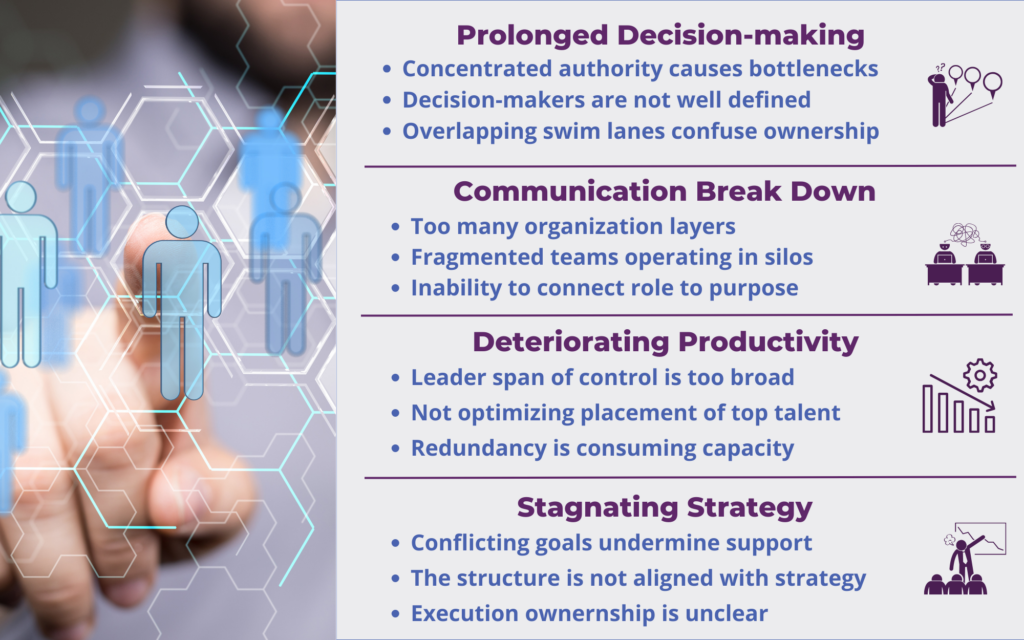Have you ever sensed that your organization was not executing like it once had? That something is just not right but you can’t put your finger on it? Recently, I collaborated with a client who was trying to understand why his team was not executing at the level it once had. I suggested that we reflect on what had changed since the team was executing at a high-level. We identified several things; more customers and employees, key initiatives were taking longer to advance, and a noticeable deterioration in morale to name a few. Further discussions led us to the realization that the flow of information and decision-making was not as seamless as it once was. Consequently, we recognized the need to delve deeper and uncover the reasons behind the changes.
We developed a discovery process that included collaboration sessions and an employee feedback survey. They would provide the data and information necessary to make some observations. After compiling and reviewing the information some discernible patterns emerged: teams were not communicating effectively, employees struggled to align their roles to strategy, and strategy ownership was unclear. These observations signaled a need to evaluate the organization structure.
The structure that proved successful during the company’s initial growth phase had become less effective. We developed a game plan to redesign the organization structure with an emphasis on enhancing agility, reinforcing ownership and accountability, and ensuring alignment with strategic objectives.
While sound leadership and team principles remain indispensable, organization structures stand out as a pivotal framework within any enterprise. Serving as a cornerstone, they articulate the principles and order that connect teams and guide them toward their goals. Organization design really does matter as it reinforces alignment and helps position for growth and scale.
In the ever-changing landscapes within which we function, periodic assessments of organizational structures become crucial. The dynamic nature of our environments can subtly surface inefficiencies that erode effectiveness over time. That makes it important to incorporate thoughtful reflection into an ongoing planning process. It will ensure that your organization’s structure remains seamlessly aligned with the evolving environment and strategy.
The following graphic identifies 4 observations that could be signaling flaws in organization structure (and some potential causes):

As an advisor Joe partners with executives to expand their capacity to develop high performing teams and organizations. Learn more about advisory services at: